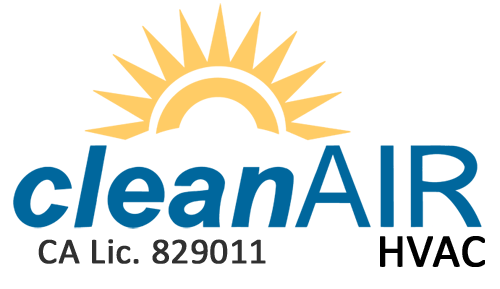
If you’re thinking about air conditioner installation in Pacheco, you should also be looking at your new air conditioner’s SEER rating.
SEER stands for Seasonal Energy Efficiency Rating. In summary, it gauges how productive your air conditioner is at converting electricity into chilled air. A bigger number indicates your air conditioner is more efficient, which is good for your electrical costs.
However, there are many different options on the market for air conditioners. And a greater SEER rating typically involves a more expensive price tag. So, how can you determine which one is ideal for your residence?
At Clean Air HVAC, we provide a free, no-pressure home comfort analysis. You can get one by contacting us at 925-233-6238. Our skilled air conditioner installers will work with you to help you choose the right air conditioner for your home. Plus, they’ll also provide you with a free, no-obligation estimate.
In the meantime, let’s discuss SEER ratings and how they can affect your family’s comfort. And your energy costs.
Does SEER Rating Really Matter?
In 2016, the federal government created new SEER guidelines. New air conditioners must be at baseline 13 SEER in the northern United States and 14 SEER in the southeast and southwest. If you don’t know when you had your air conditioner put in or what its SEER ranking is, you can look at the sticker on the condenser outside your house. If you can’t find the sticker, you can get in touch with us at 925-233-6238 for support.
If your air conditioner was put in prior to that time, it’s probably much less efficient. Cooling technology has swiftly changed in the past several years, with major advances in energy efficiency and smart home capacity. Using your new air conditioner with a smart thermostat could help you save even more on utility expenses, because the thermostat can intuitively manage your temperature settings when you’re out.
If your current air conditioner has a SEER rating between 8 and 10, getting a 14-SEER system could save you an estimated 30–50% on annual electrical bills. Your savings depend on your air conditioner size and your thermostat settings.
Is the Higher the SEER the Better?
An air conditioner with a higher SEER rating will be more efficient at consuming electricity for cooling. The most efficient systems, which can go as great as 26 SEER, include ENERGY STAR® designation. This endorsement shows the air conditioner matches EPA rules for energy savings and environmental conservation.
While ENERGY STAR air conditioners are frequently more costly, you’ll generally get the difference repaid throughout the years through smaller utility bills. These air conditioners, which are generally rated 16 SEER and up, use about 8% less energy than other new models, according to ENERGY STAR.
One of the largest differences between a 14 SEER and 16 SEER is variable-speed capability. A variable-speed air conditioner can work at different speeds. This refines comfort for your residence while keeping your electrical bills low. It can also keep temperatures and humidity more balanced, since it can run for longer without consuming a lot more energy.
When getting a variable-speed air conditioner, you’ll have to ensure that your furnace or air handler is compatible. This is because your air conditioner relies on this unit’s blower to distribute chilled air around your residence. Furnaces only work for approximately 20 years, so if yours is around that age, we advise getting furnace installation at the same time so you can get all the benefits of your variable-speed air conditioner.
When you’re ready to replace your air conditioner, the cooling specialists at Clean Air HVAC are available to help. Reach us at 925-233-6238 to schedule your free home comfort analysis right away.


